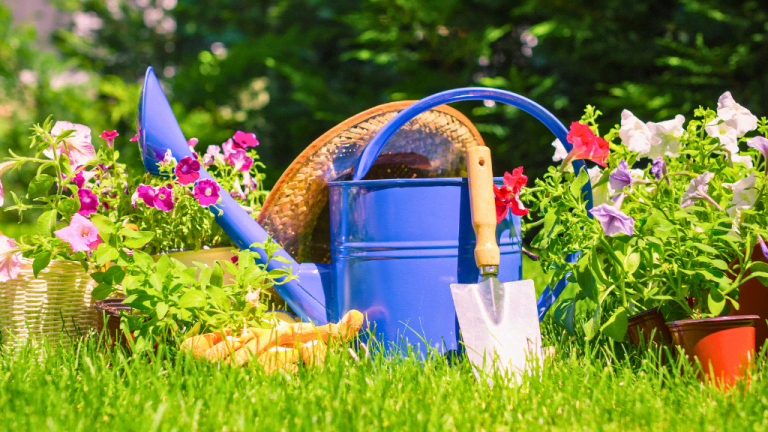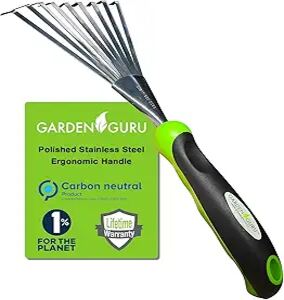The Comprehensive Overview to Gardening: Discover the Benefits of Different Styles and Techniques
Gardening incorporates a varied range of styles and techniques, each offering special benefits tailored to specific preferences and ecological contexts. As we discover these various styles, it comes to be noticeable that the options made can dramatically affect both the yard's health and wellness and its payment to the surrounding setting.
Recognizing Gardening Basics
Understanding the fundamentals of gardening is essential for cultivating a growing and sustainable yard. A successful horticulture undertaking begins with a solid structure of understanding relating to dirt, plant selection, and environment factors to consider.
Selecting the right plants is similarly essential. Recognizing their particular requirements-- such as sunshine, water, and spacing-- ensures compatibility with the regional environment and dirt problems. This selection process must additionally consider the growth habits and lifecycle of plants, enabling for a well balanced and cosmetically pleasing yard.
Moreover, reliable watering practices are vital. Over-watering and under-watering can both lead to plant anxiety and disease. Carrying out a schedule based on seasonal modifications and plant requirements can enhance water efficiency.
Popular Gardening Styles
What specifies the essence of popular horticulture styles? These styles envelop diverse aesthetic principles, useful demands, and ecological factors to consider, ultimately reflecting the gardener's individual vision. Among the most popular styles is the cottage garden, defined by its casual design and a lively array of flowers and veggies. This technique highlights a harmonious mix of shade and appearance, producing an inviting atmosphere.
Alternatively, the formal garden symbolizes symmetry and order, often including geometric patterns and thoroughly trimmed hedges. This design interacts beauty and sophistication, with thoroughly selected plants that enhance a structured aesthetic.
The Japanese yard provides a calm and meditative experience, using natural elements like water, stones, and plants to produce a peaceful atmosphere. It concentrates on simplicity and equilibrium, motivating contemplation.
Furthermore, xeriscaping has obtained popularity, particularly in arid areas (Gardening). It prioritizes drought-resistant plants and reliable water usage, promoting sustainability while boosting landscape beauty
Advantages of Container Horticulture
Container gardening supplies a plethora of benefits that make it an enticing option for both amateur and knowledgeable gardeners alike. Among the key advantages is adaptability; containers can be put in different areas, enabling gardeners to maximize sunlight exposure and produce aesthetically enticing plans. This flexibility makes it feasible to garden in areas where traditional in-ground gardening may not be practical, such as verandas, patio areas, or urban atmospheres.
Furthermore, container horticulture supplies far better control more over soil conditions. Gardeners can tailor the dirt mix to suit particular plants, ensuring ideal drain and nutrient availability. This is specifically beneficial for people living in locations with bad or contaminated soil.
Another significant advantage is the lowered danger of pests and conditions. Container plants can be checked much more easily, and any kind of problems can be addressed without delay. This method can decrease the spread of invasive species.
Lasting Gardening Practices
Sustainable horticulture practices are necessary for promoting ecological health and wellness and enhancing biodiversity in our ecological communities. These techniques prioritize eco-friendly balance, source conservation, and making use of organic approaches to reduce adverse environmental effects. By employing methods such as composting, garden enthusiasts can minimize waste while improving dirt health and wellness, therefore promoting a flourishing yard community.
Water preservation is another essential aspect of sustainable horticulture. Techniques such as rain harvesting, drip irrigation, and making use of drought-resistant plants can significantly decrease water usage while ensuring that plants get appropriate dampness. Additionally, integrating indigenous plant varieties right into yard designs supports regional wildlife and minimizes the demand for chemical plant foods and pesticides, which can be harmful to the atmosphere.

Inevitably, sustainable gardening techniques not only add to much healthier gardens however likewise advertise an even more durable setting, offering lasting advantages to both the garden enthusiast and the surrounding community.
Tips for Successful Gardening
To cultivate a flourishing garden, garden enthusiasts need to focus on careful preparation go to this site and thoughtful execution of their gardening methods. Begin by analyzing the local climate and soil conditions, as these aspects dramatically affect plant option and growth. Choose plants that are well-suited to your setting, thinking about native types that will love minimal intervention.
Carrying out a well-structured format is crucial (Gardening). Utilize companion growing techniques to promote biodiversity and natural insect control, while making sure each plant has appropriate area for growth. This not just enhances aesthetics but additionally improves overall plant health
Normal upkeep is crucial to an official source effective garden. Develop a constant routine for watering, weeding, and fertilizing. Mulching can help preserve dampness and suppress weeds, while additionally including natural matter to the soil.
Consistently checking plant health and wellness and growth will permit for timely interventions. Be open to finding out and adapting; horticulture is a continuous procedure that profits from experience and trial and error.
Final Thought


In recap, the exploration of diverse horticulture styles and approaches discloses their diverse benefits, adding to both visual charm and ecological wellness. Container gardening offers adaptability and ease of access, while lasting techniques boost environmental stewardship. By integrating different techniques and methodologies, garden enthusiasts can optimize their initiatives, promote biodiversity, and develop practical exterior areas. Ultimately, this extensive overview works as a valuable source for cultivating effective horticulture experiences, fostering a much deeper connection with nature and the surrounding ecosystem.
Comments on “Seasonal Gardening Tips: What to Plant and When for Ideal Outcomes”